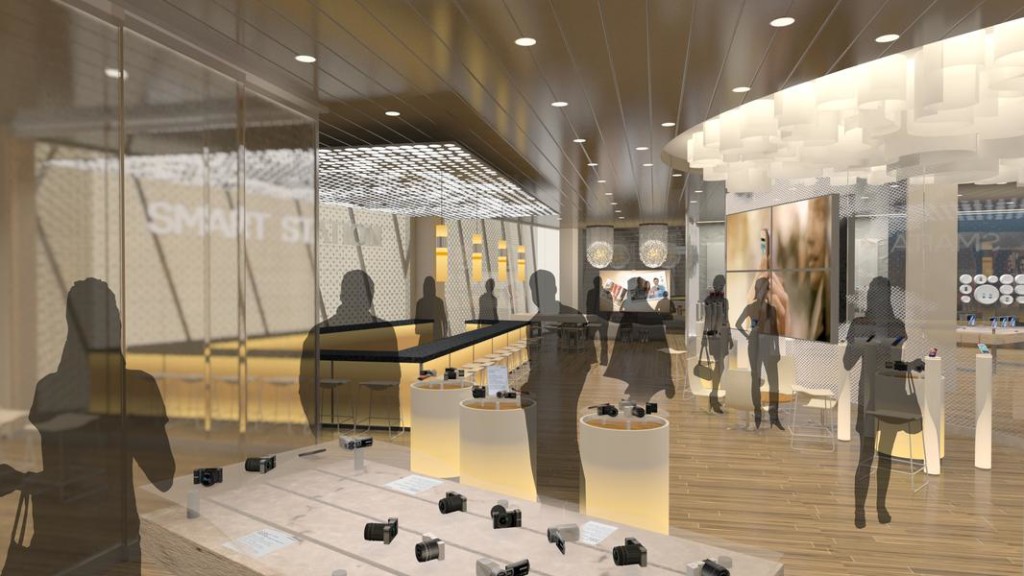
By Doug Stephens
Retail is facing a monumental problem that no one seems to want to talk about. It’s that the entire economic model of revenue and profitability for retailers and the suppliers they do business with is collapsing under its own weight and soon will no longer function.
Part of the problem stems from the continued pervasiveness of online retail. Global ecommerce increased by 19 percent in 2013 alone, a figure that was likely equaled or bettered in 2014. With those sorts of multiples, it’s entirely likely that upwards of 30 percent or more of the total retail economy will be transacted online by 2025.
Our dependence on stores to serve as distribution points for products is rapidly diminishing as digital media, in all forms, becomes remarkably effective at serving our basic shopping and distribution needs which, until recently, could only be fulfilled by physical stores. Now, just about anything we buy can be on our doorstep in a matter of days, if not hours via a myriad of online shopping options.
The End of Wholesale
This historic transition raises a few critical questions: How can the financial models for retail revenue and profit, which haven’t changed significantly since the industrial revolution, sustain if the core purpose and definition of a “retail store” itself is being completely reinvented? How can retailers continue to buy products in mass quantity at wholesale, ship them, inventory them, merchandise them, train their staff on them, manage them and attempt to sell them, when the consumer has a growing myriad of options, channels and brands through which to buy those very same products? How many of today’s retailers will simply stand by and watch an ever-increasing percentage of their sales cleave off to an expanding mosaic of online competitors – which, by the way, may include many of their own suppliers who are now selling direct to consumers?
It seems inevitable that retailers will have to define a new model; one better suited to the fragmented market they find themselves in.
The Store As Media
This does not, however, mean an end to physical retail stores but rather a repurposing. Given their innately live, sensorial and experiential quality, physical stores have the potential to become powerful media points from which retailers can articulate their brand story, excite consumers about products and then funnel their purchase to any number of channels, devices and distributors. In fact, as I’ve often argued, the physical store is has the potential to be the most powerful and effective form of media available to a brand because it offers an experience, which if crafted properly, cannot be replicated online.
The Experience Is The Product
With all this in mind, I foresee a not-so-distant future where the retailer/vendor relationship will begin to look a lot more like a media buy than the wholesale product purchase agreement of today.
Part media outlet, part sales agent – a new breed of experiential retailers will use their physical stores to perfect the consumer experience across categories of products. They will define the ideal experiential journey, employ expert “product ambassadors” and technology to deliver something truly unique, remarkable and memorable. So memorable in fact, that it leaves a lasting experiential imprint on the shopper. The solitary aim of these new-era retailers will be to drive significant sales for their vendors’ products across multiple channels including, at least to some extent, their own. But unlike stores of today that are single-mindedly focused on keeping sales in-house, stores of the future will position themselves as true omnichannel hubs, serving customers through multiple channels of fulfillment, which will ultimately include their vendors and competitors – yes, even their competitors. Attribution for these sales will matter less than delivering the powerful shopping experience responsible for generating them, regardless of how, when or through whom they occur.
Skids of products and rows of shelving will give way to more gallery-esque store designs and artful merchandising, allowing space for in-store media and interactivity with product. Social media will be infused into the experience offering at-the-shelf reviews, ratings and comparisons of products. The store in essence will become an immersive and experiential advertisement for the products it represents and a direct portal to the entire universe of distribution channels available.
A New Revenue Model
As for revenue; Retailers who can design and execute these sorts of outstanding customer experiences will likely charge an upfront fee or “card rate” to their product vendors based on the volume of positive exposure they bring to the products they represent in store.
If this seems implausible, consider that just as musicians now make significantly less from record sales than they do from live performances, so too will great retailers build more of their economic model around delivering a live in-store experience around their products, than relying solely on the margin from individual product sales.
Metrics Beyond Sales
This new model will, however, require retailers to qualify and quantify the experience they deliver, the traffic they generate and the consequent downstream sales impact they influence. To that end, an array of new technologies will enable a 360-degree understanding of the experience in both stores and the centers in which they sit. Anonymous facial recognition, video analytics, mobile ID tracking, beacon technology, radio  frequency identification and other systems will transform stores into living websites. Using these and other technologies, store chains will be able to understand the profile and behavior of the customers in their spaces and gather new insight into the level of engagement being created and eventually, even its causal impact on downstream purchases. In other words, the ability to understand what kind of customers came into the store, how many were repeat versus unique visitors, where they went within the store, what and with whom they engaged and ultimately what they bought while in the store and even after leaving the store.
frequency identification and other systems will transform stores into living websites. Using these and other technologies, store chains will be able to understand the profile and behavior of the customers in their spaces and gather new insight into the level of engagement being created and eventually, even its causal impact on downstream purchases. In other words, the ability to understand what kind of customers came into the store, how many were repeat versus unique visitors, where they went within the store, what and with whom they engaged and ultimately what they bought while in the store and even after leaving the store.
New Era. No Rules.
My hope is that retailers accept this historic shift as a call to action – a heads-up that, to invoke Sam Walton, the days of stacking it high and watching it fly, are gone forever. Retailers that succeed in the digital age, will be those that begin now to redefine the value they bring to the equation and dare to defy what is fast becoming old industry math.

